As cities continue to grow and face numerous challenges, promoting sustainability and creating livable urban environments are becoming more crucial than ever. One effective way to achieve these goals is through urban nature-based solutions.
Urban nature-based solutions involve integrating nature into urban settings, including green infrastructure, urban forests, parks, and gardens. By incorporating nature into city planning and development, it is possible to improve the quality of life for urban residents and promote sustainable growth.
In this article, we will explore the concept of urban nature-based solutions, the benefits they provide, strategies for integrating them into urban planning, financing mechanisms, examples of successful projects, challenges and opportunities, and frequently asked questions about this emerging field.
Understanding Urban Nature-Based Solutions
Urban nature-based solutions refer to the implementation of natural elements, such as green spaces and sustainable infrastructure, into urban environments to address issues of sustainability and liveability. These solutions aim to enhance biodiversity, improve the quality of urban life and promote sustainable development in cities.
By incorporating biodiversity into urban settings, these solutions can help to mitigate the negative impacts of urbanization on the environment. This can include reducing the urban heat island effect, improving air and water quality, and providing habitats for local wildlife.
There are several nature-based solutions already implemented in cities around the world. For example, Melbourne’s Green Infrastructure Plan incorporates features such as green roofs and walls, street trees, and urban wetlands to improve the city’s biodiversity. Similarly, Singapore’s Gardens by the Bay integrates green spaces and sustainable infrastructure to create a more sustainable and liveable city.
By understanding the importance of urban nature-based solutions, we can begin to create more sustainable and liveable cities for the future.
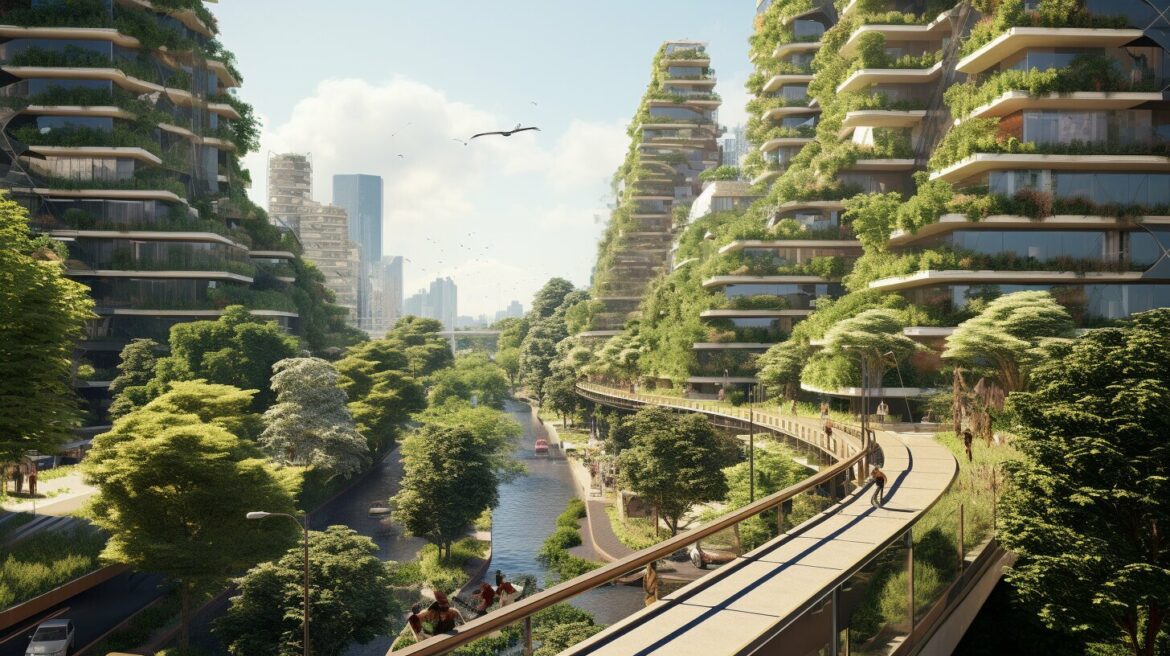
The Role of Green Spaces in Urban Environments
Green spaces such as parks, gardens, and urban forests are essential elements of urban biodiversity and play a crucial role in creating livable cities. While urban areas are often characterized by a lack of natural areas, green spaces provide a variety of benefits for both humans and wildlife.
Improved air quality: Trees and plants in urban green spaces absorb carbon dioxide and other pollutants, helping to improve air quality in heavily populated areas. This can have significant positive impacts on public health, especially for those who live near busy roads or factories.
Reduced urban heat island effect: Green spaces can help to mitigate the urban heat island effect, where urban areas experience higher temperatures than surrounding rural areas. Trees provide shade and can reduce the amount of heat absorbed by buildings and concrete surfaces.
Promoting physical and mental well-being: Access to green spaces has been linked to improved mental health and physical activity levels. Green areas provide opportunities for outdoor recreation, relaxation, and social interaction, all of which can contribute to overall well-being.
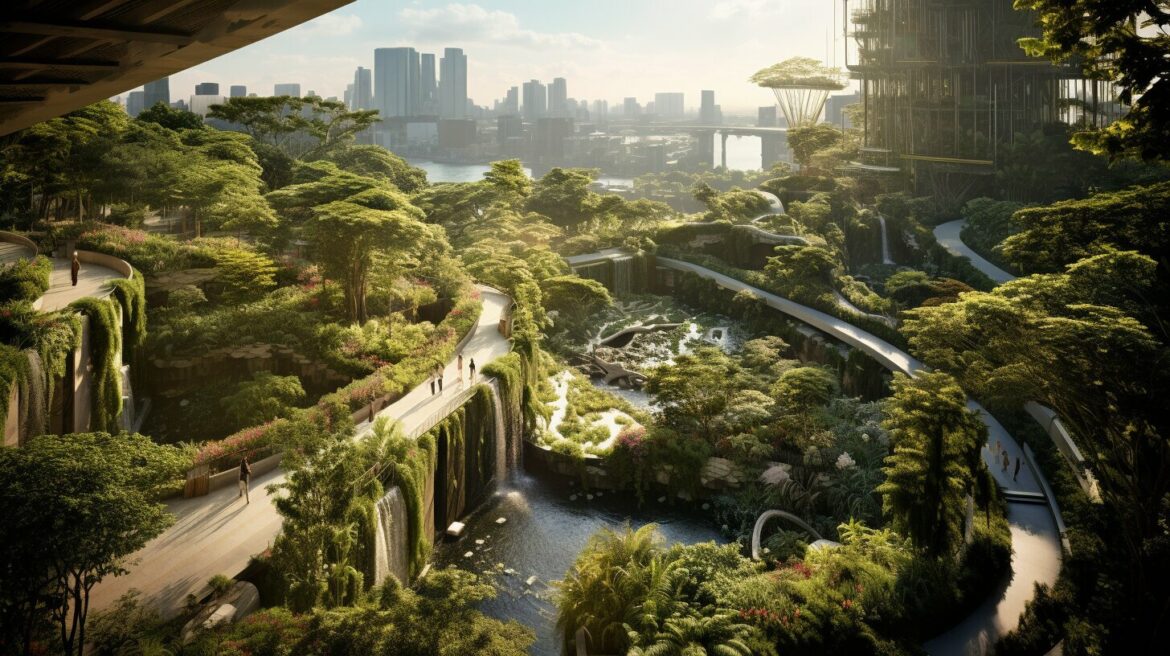
Furthermore, green spaces can support urban wildlife by providing important habitats and food sources. Urban green spaces can serve as stepping stones and corridors for animal movement, creating important connections between isolated patches of natural areas. By protecting and enhancing urban green spaces, we can help to conserve biodiversity in cities.
Integrating Nature into Urban Planning
As urbanisation continues to reshape the globe, integrating nature into urban planning has become more crucial than ever in creating sustainable and liveable cities. Green infrastructure, such as green roofs, urban forests and rain gardens, can bring numerous benefits, including improved air quality, stormwater management and temperature regulation.
Integrating nature into urban planning can have a significant impact on biodiversity and the environment. By incorporating green spaces and natural habitats into urban environments, it is possible to create thriving ecosystems that support a diverse range of wildlife and contribute to the overall health of the ecosystem.
Green roofs and walls are excellent examples of nature-based solutions that can be integrated into urban settings, providing numerous environmental benefits in addition to being aesthetically pleasing. Green roofs, for example, can significantly reduce energy costs by providing insulation, absorb rainwater and reduce stormwater run-off, and enhance biodiversity by providing habitats for birds, bees and other animals.
Urban forestry is another strategy that can be used to integrate nature into urban planning. By planting trees and creating urban forests, cities can mitigate the effects of climate change, including heat waves and flooding, and enhance air quality. Additionally, urban forests provide valuable habitat for wildlife and can help promote physical and mental well-being among city residents. (You may also find What architecture increases biodiversity useful),
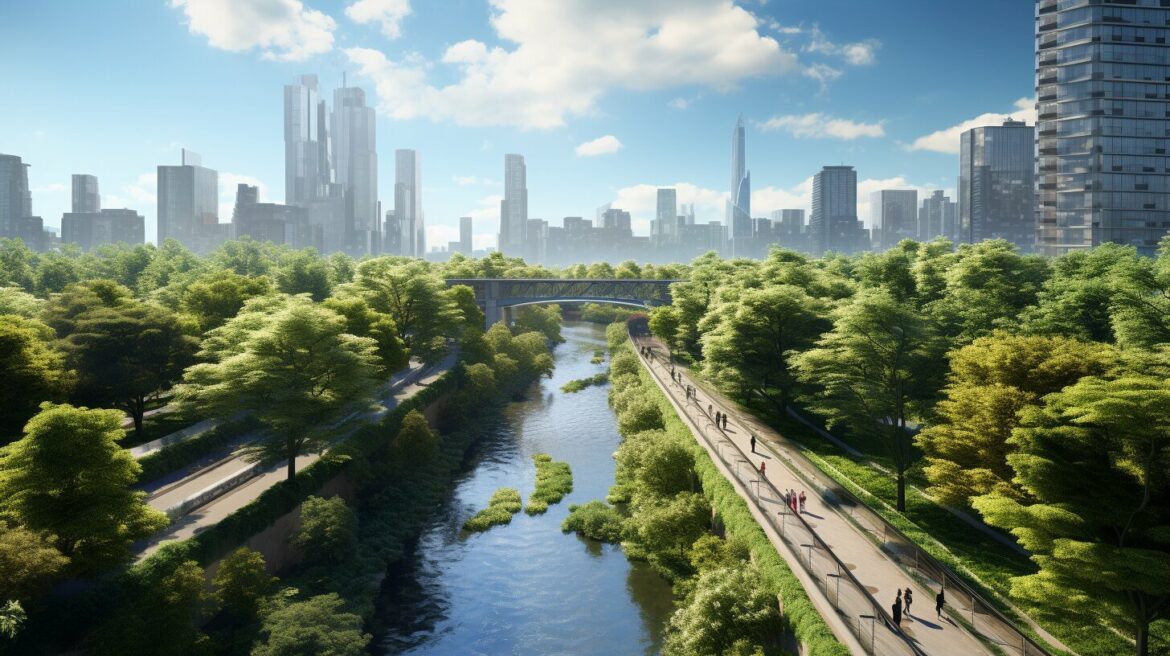
Green Infrastructure
Green infrastructure can be defined as the network of natural and semi-natural spaces and features that provide multiple ecological, social, and economic benefits. It includes green roofs, green walls, rain gardens and bioswales, urban forests, parks, and other green spaces.
Green infrastructure can reduce energy use, improve air and water quality, provide habitats and ecosystems services and enhance climate resilience. For example, in New York City, the Green Infrastructure Plan aims to capture and manage the first inch of rainfall, which is responsible for 65% of the city’s combined sewer overflow events. The plan includes the installation of 14,000 bioswales over the next 20 years.
Integrating green infrastructure into urban planning requires the collaboration of various stakeholders, including city planners, architects, engineers, landscape architects, and community groups. By working together, it is possible to create sustainable and livable cities that support the health and well-being of all their residents.
Nature-Based Solutions for Sustainable Transportation
Sustainable transportation is becoming increasingly important in urban areas, and nature-based solutions can play a key role in achieving this goal. By incorporating green infrastructure into transport planning, cities can reduce their carbon footprint and improve the health and well-being of their citizens.
One example of a nature-based transportation solution is the creation of dedicated cycling lanes. Cycling is a clean and efficient mode of transport that can reduce traffic congestion and air pollution. By building safe and accessible bike lanes, cities can encourage more people to cycle and reduce their reliance on cars.
Another option is to promote pedestrian-friendly streets, which can benefit both the environment and local businesses. By creating attractive and walkable streetscapes, cities can reduce traffic, improve public health, and increase economic activity in the surrounding area.
Green public transportation is also an option that many cities are exploring. For example, some cities have implemented electric buses powered by renewable energy sources. These buses are not only more environmentally friendly than traditional diesel buses, but they also improve air quality and reduce noise pollution.
By incorporating nature-based solutions into sustainable transportation planning, cities can create a more liveable environment for their citizens while reducing their environmental impact.
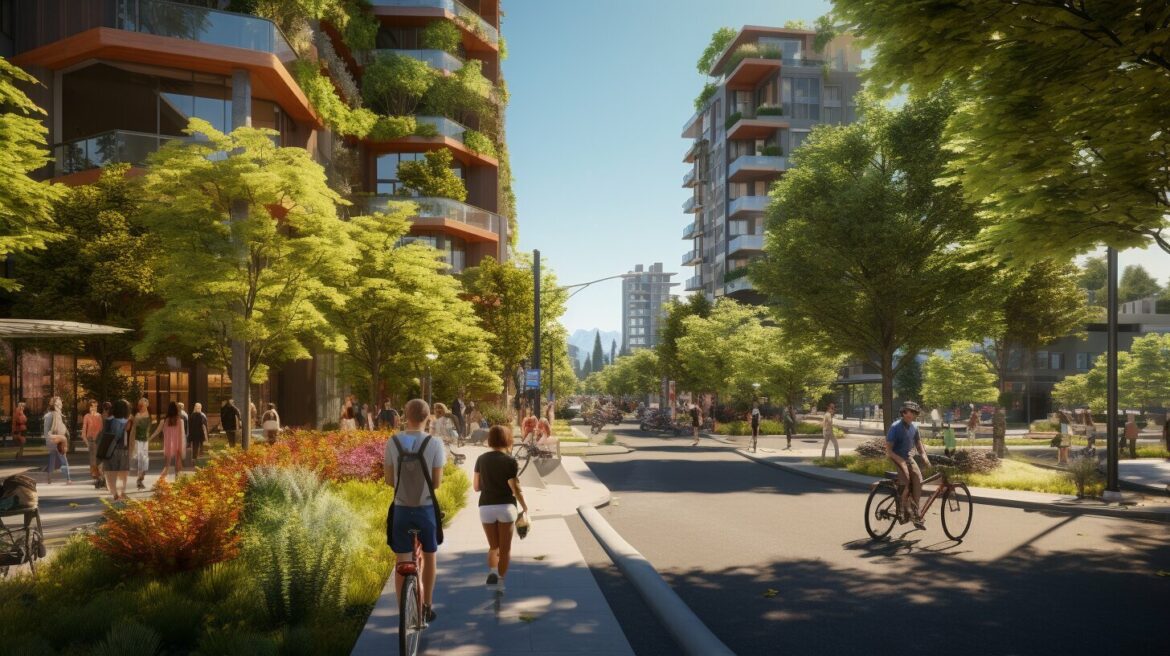
Enhancing Biodiversity through Urban Nature-Based Solutions
Urban nature-based solutions have the potential to contribute significantly to enhancing biodiversity in cities. With the majority of the world’s population living in urban areas, it is essential to create habitats for wildlife and promote biodiversity conservation in these settings. By preserving and restoring green spaces, incorporating green infrastructure, and developing sustainable transportation options, cities can become more nature-positive.
The importance of biodiversity in urban environments cannot be overstated. Biodiversity provides essential ecosystem services, such as pollination, pest control, and nutrient cycling. It also contributes to the cultural and aesthetic values of urban areas, promoting the mental and physical well-being of residents.
Preserving and creating habitats for wildlife in urban areas is a crucial aspect of enhancing biodiversity. This can involve protecting existing green spaces, such as parks and gardens, and creating new ones, such as urban wetlands and green roofs. Urban forests are also valuable habitats for many species and can be integrated into urban planning and development projects. For example, the Millennium Forest in Beijing, China, is a 60,000-hectare forest that provides habitat for over 1,400 species of plants and animals.
Green infrastructure, such as green roofs, urban forests, and rain gardens, can also contribute significantly to enhancing biodiversity in urban areas. These features can provide valuable habitat for wildlife and help to reduce the urban heat island effect, improving the livability of cities. One example of successful green infrastructure is the Seattle Green Factor, a program that requires new development projects to incorporate green roofs, trees, and other vegetation to enhance biodiversity, reduce stormwater runoff, and improve air quality.
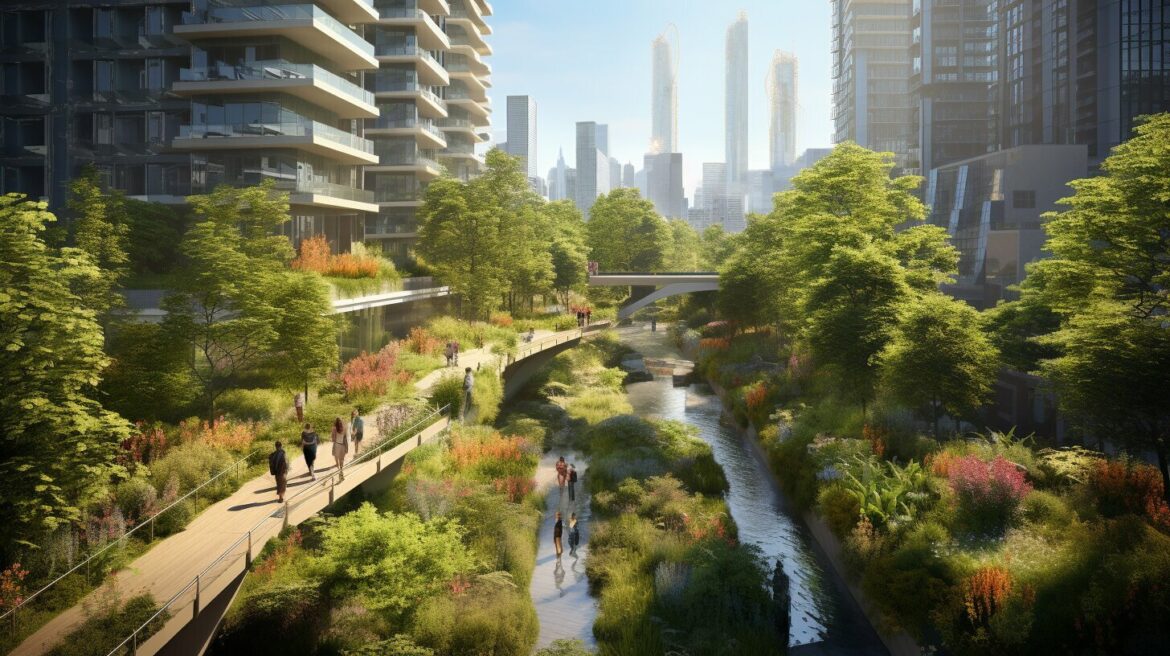
Nature-based solutions for transportation can also play a role in enhancing biodiversity in urban areas. For example, cycling lanes, pedestrian-friendly streets, and green public transportation options can reduce the use of private vehicles and promote sustainable transportation. This, in turn, can help to reduce habitat fragmentation and the negative impact of transportation on urban wildlife.
Ultimately, enhancing biodiversity through urban nature-based solutions requires a collaborative effort from all sectors of society. By involving local communities, businesses, and governments in the planning and implementation of urban nature-based solutions, cities can become more sustainable, liveable, and nature-positive. Another resource that is linked to this topic is What is environmental net gain?
The Role of Community Engagement in Urban Nature-Based Solutions
Community involvement is crucial to the success of urban nature-based solutions. When local communities are engaged in the planning and implementation of nature-positive city initiatives, they become invested in the project’s success. This collaboration helps to create a sense of ownership among community members and fosters a stronger sense of community spirit. Moreover, community engagement can help to ensure that the needs and priorities of local residents are taken into account.
One example of successful community engagement in urban nature-based solutions is the “Greening the Pipeline” project in Melbourne, Australia. This initiative involved the transformation of an unused gas pipeline into a 2.5-kilometre-long park that runs through the city’s western suburbs. Local residents were involved in the planning and implementation of the project from the start, with community meetings held to gather input and feedback on the design. As a result, the park reflects the community’s vision and values, and has become a much-loved gathering place for residents.
Another example is the “Greening of Detroit” project. This initiative aims to transform vacant lots into community gardens and parks, with a focus on engaging local residents in the process. The project has created more than 1,400 community gardens and has helped to improve the economic and social well-being of the neighbourhoods where they are located.
Community-driven projects like these can have a significant impact on the quality of life in urban areas. They help to create vibrant and liveable communities, while promoting environmental sustainability and biodiversity conservation. By involving local residents in the process, urban nature-based solutions can become a source of pride for the community and a catalyst for positive change.

Financing Urban Nature-Based Solutions
Implementing nature-based solutions in urban areas can be costly, and finding adequate funding is crucial for their success. Fortunately, there are various sources of financing available for nature-based projects, including:
| Source of Financing |
Advantages |
Disadvantages |
| Public-Private Partnerships (PPPs) |
-Combines the resources of both the public and private sectors
-Can leverage private sector expertise and innovation |
-May be difficult to negotiate and manage partnerships
-Potential conflicts of interest |
| Government Funding |
-Stable and reliable source of funding
-Can prioritize projects that align with government policies and priorities |
-May be subject to political changes and budget constraints
-May be difficult to access for smaller organizations or community groups |
| Green Financing |
-Funds specifically designated for environmentally-friendly projects
-Can attract socially responsible investors |
-May have stricter eligibility criteria
-May require higher interest rates or collateral |
Other innovative financing mechanisms include crowdfunding, impact investing, and community bonds. It is important to consider the costs and benefits of each financing option, as well as the overall financial sustainability of the project.
Image source: https://seowriting.ai/32_6.png
The Importance of Measuring the Impact of Urban Nature-Based Solutions
Measuring the impact of urban nature-based solutions is crucial in understanding their effectiveness in promoting sustainability and improving the livability of cities. By tracking key metrics and indicators, we can evaluate the success of nature-based projects and identify areas for improvement.
One important aspect to measure is the biodiversity of urban areas. With the increasing loss of natural habitats worldwide, cities have the potential to become important refuges for wildlife. However, in order to achieve this, urban planners and policymakers must prioritize preserving and creating green spaces that can support a variety of species. Metrics such as the number of species present in a given area, the number of native plants used in landscaping, and the presence of small-scale habitats like birdhouses and insect hotels can all help track progress in enhancing urban biodiversity.
Monitoring the Health of Urban Ecosystems
Another important aspect of measuring the impact of urban nature-based solutions is monitoring the health of urban ecosystems. Green spaces can serve as natural filters, helping to improve air and water quality in urban areas. By monitoring factors such as air and water pollution levels in and around green spaces, we can track the impact of nature-based solutions on the local environment.
Additionally, monitoring the impact of urban green spaces on human health and well-being is important. Studies have shown that spending time in nature can have a positive impact on mental health and reduce stress levels. Metrics such as the number of visitors to urban parks and green spaces, as well as the benefits reported by these visitors, can help track the success of urban nature-based solutions in promoting physical and mental well-being.
Tracking Economic Benefits of Urban Nature-Based Solutions
Finally, measuring the economic benefits of urban nature-based solutions is important in ensuring their continued funding and implementation. Nature-based solutions can provide cost-effective alternatives to traditional infrastructure projects, while also providing additional benefits such as reduced energy costs and increased property values. By tracking metrics such as cost savings achieved through green infrastructure projects, we can demonstrate the economic viability of these initiatives and encourage further investment in nature-based solutions.
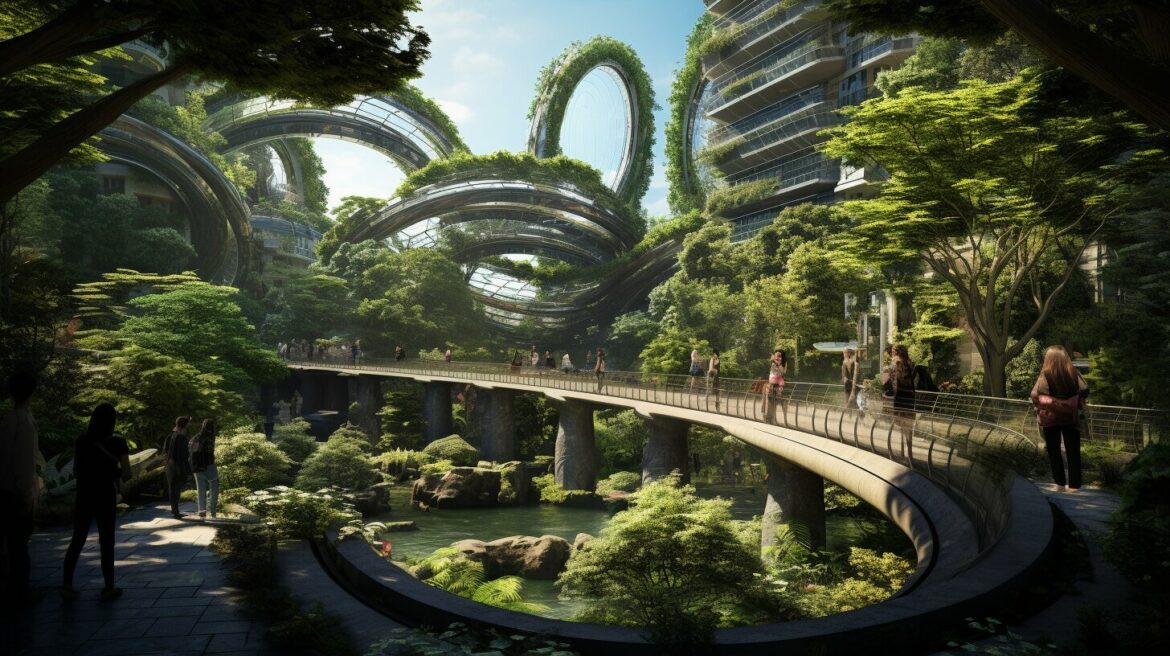
Case Studies of Successful Urban Nature-Based Solutions
Urban nature-based solutions have already been implemented in many cities around the world, showing that it is possible to create more sustainable and livable urban environments. Here are some examples of successful projects:
High Line Park, New York

The High Line Park in New York City is a great example of how an unused space can be transformed into a vibrant green area that benefits both the environment and the community. The park was built on an elevated abandoned railway track, and now serves as a beautiful walking trail with a variety of plants and trees that attract birds and other wildlife. The project has been a huge success, attracting millions of visitors each year and boosting local businesses.
Depave Paradise, Toronto
Depave Paradise is a community-driven project in Toronto that aims to remove concrete and create more green spaces. By tearing up parking lots, volunteers have created rain gardens and other green infrastructure that helps to reduce urban heat island effect and improve water quality. The project has transformed several areas of the city, making them more pleasant and healthier for residents.
Tokyō Green Road, Tokyo
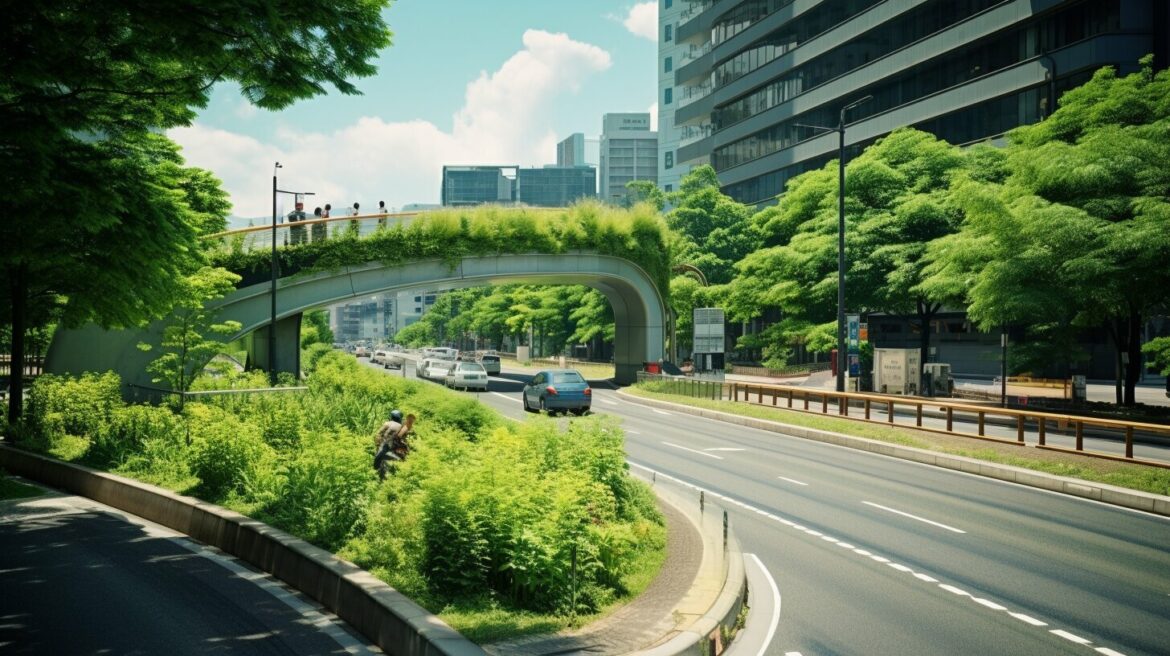
The Tokyō Green Road is a 6-km walking and cycling path that connects various parks and green spaces across Tokyo. The project aims to promote eco-friendly transportation and provide residents with access to nature within the city. The path is lined with trees and plants, and features several rest areas where visitors can relax and enjoy the scenery. The project has been praised for its innovative approach to sustainable transportation and urban planning.
These are just a few examples of the many successful urban nature-based solutions that have been implemented around the world. By learning from these projects and working together, we can create more nature-positive cities that benefit both people and the planet.
Future Challenges and Opportunities in Urban Nature-Based Solutions
As the world becomes increasingly urbanized, the need for sustainable and liveable cities grows. Urban nature-based solutions are an integral part of achieving this goal, but several challenges and opportunities lie ahead.
The Impact of Climate Change
Climate change poses a significant threat to urban ecosystems and the well-being of city dwellers. As temperatures rise and extreme weather events become more frequent, cities must adapt to changing conditions. Urban nature-based solutions have the potential to mitigate the effects of climate change, but they also face the challenge of adapting to a rapidly changing environment.
Integration with Other Urban Planning Priorities
Urban nature-based solutions must be integrated with other urban planning priorities to achieve successful outcomes. Sustainable transportation, housing, and economic development are all critical components of creating sustainable and livable cities. Finding ways to integrate these priorities with urban nature-based solutions is a challenge that must be addressed.
Equitable Access to Nature
Access to nature in urban areas is not evenly distributed across all communities. Low-income neighbourhoods and communities of color often lack access to green spaces and other nature-based solutions. Addressing this inequality and ensuring that all communities have equitable access to nature is an important challenge for future urban development.
New Technologies and Innovations
New technologies and innovations are emerging that have the potential to revolutionize urban nature-based solutions. From green roofs and living walls to vertical farms and biophilic design, these new approaches offer exciting opportunities for the future of urban development.
Maintaining and Expanding Biodiversity
Preserving and expanding biodiversity in urban areas is essential for the long-term success of urban nature-based solutions. As cities grow and develop, it becomes increasingly challenging to maintain and expand natural habitats. Ensuring that biodiversity is a priority in urban planning and development is an ongoing challenge.
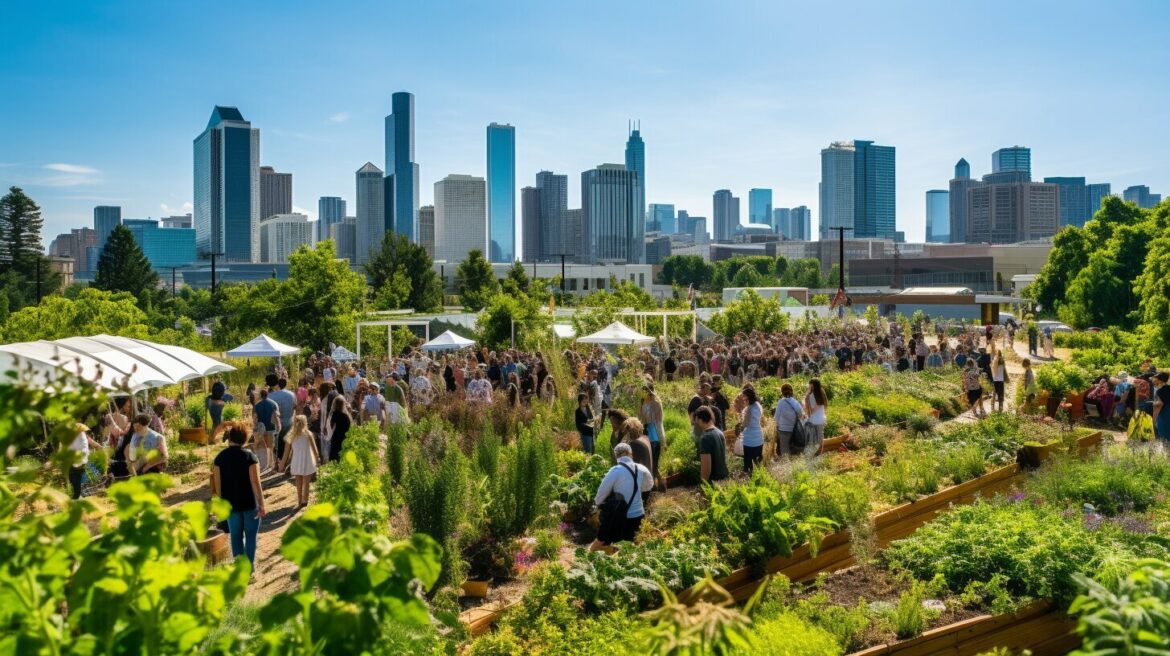
Frequently Asked Questions about Urban Nature-Based Solutions
As urban nature-based solutions become increasingly popular, many people have questions about their implementation and benefits. Here are some commonly asked questions and their answers:
What are urban nature-based solutions?
Urban nature-based solutions are practical strategies that use natural elements, such as plants, trees, and water, to address urban issues, including air pollution, climate change, and social well-being. These solutions can be applied in various ways, such as creating green roofs, rain gardens, and urban forests.
What are the benefits of urban nature-based solutions?
Urban nature-based solutions provide a host of benefits, including improving air and water quality, reducing heat island effects, promoting physical and mental well-being, and enhancing biodiversity. These solutions also contribute to more sustainable and livable cities.
How can nature be integrated into urban planning?
Nature can be integrated into urban planning through the use of green infrastructure. Green infrastructure is a network of natural and semi-natural systems that provide environmental, social, and economic benefits. Examples of green infrastructure include green roofs, urban forests, and rain gardens.
What is the role of community engagement in urban nature-based solutions?
Community involvement is crucial for the successful implementation of urban nature-based solutions. Local communities can provide valuable insights on the needs and preferences of residents, and can contribute to the planning, design, and maintenance of nature-based projects. Community-driven initiatives can also foster a sense of ownership and pride in nature-positive cities.
How are urban nature-based solutions financed?
Financing for urban nature-based solutions can come from a variety of sources, including public-private partnerships, government funding, and green financing. Some cities also use crowdfunding platforms to support community-driven initiatives.
How can the impact of urban nature-based solutions be measured?
The impact of urban nature-based solutions can be measured through various metrics and indicators, such as air and water quality, temperature, biodiversity, and social well-being. Monitoring and evaluation are essential to assess the effectiveness of nature-based projects and to identify areas for improvement.
What are some examples of successful urban nature-based solutions?
There are many examples of successful urban nature-based solutions from around the world. Examples include highline park in New York, Millennium Park in Chicago, and the Cheonggyecheon River restoration in Seoul. These projects demonstrate the innovative approaches and positive outcomes that can be achieved through the integration of nature into urban environments.
Whether you are a city planner, a community activist, or a concerned citizen, understanding urban nature-based solutions is essential for creating more sustainable and livable cities.




























Post comments (2)